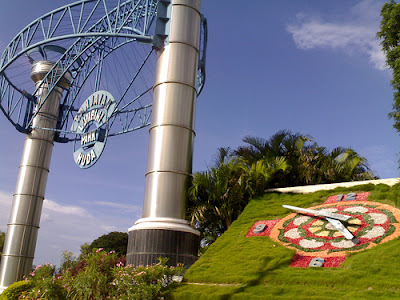Photo: Tourists watching chained tigers in the Tiger Temple in Thailand, photo taken in June 2004
The picture shows an area inside the Tiger Temple (Wat Pha Luang Ta Bua Yanasampanno) located in the Kanchanaburi Province of Thailand.
Established as a Buddhist forest temple and wildlife sanctuary in 1994, it had about 150 tigers, other animals and birds as of January 2016. The star attraction of the sanctuary was the Tiger Island, spread over five hectares and completed in 2011 at a cost of over US$ 2.5 million. It had 28 tiger enclosures and was a huge hit with local tourists and backpackers.
The whole complex presented a romantic picture, monks living with tigers and other wild animals in perfect harmony. You too could have been part of such a mystical harmony, getting photographed with tigers or even taking a selfie with the magnificent feline friends.
But for a price; reportedly, the entrance fee per head ranged from US$17 to US$140, earning millions of dollars for the temple management.
Over the years, the temple had been accused of illegal breeding and controversial commercial activities. A number of NGOs and conservation and animal rights groups contacted the Thai authorities urging them to take action against the temple.
The NGOs alleged clandestine exports to a tiger farm in Laos, among many other allegations, and asked the authorities to conduct genetical tests to determine the subspecies and pedigree of the big cats.
Breeding tigers for commercial use is restricted by the Convention on International Trade in Endangered Species (CITES) to which Thailand is a signatory, and the unlicensed breeding violates Thai laws too.
The authorities had been persuading the monks to stop all illegal activities. They also wanted the monks to stop exposing tourists to hazardous contact with tigers. The NGOs had already pointed out that there are up to 60 reported incidents annually of captive tigers attacking tourists and/or attendants.
On May 30, 2016, more than 500 officers consisting of wildlife officials, police and vets raided the temple complex. They seized 137 living tigers, 40 frozen cub corpses, a dead bear, a large number of body parts of other animals preserved in freezers and horns of various animals. Some of the dead cubs were found preserved in formaldehyde. They also found protected birds such as hornbills that were being reared without license.
The police also stopped the abbot's secretary trying to flee with tiger skins, over 1000 amulets containing pieces of tiger skin, and other contraband items. They also seized trucks loaded with protected Siamese rosewood.
Some packed carcasses of cubs in containers had labels in English implicating they were for local sale or international trade.
The subspecies of the tigers in this unscientifically maintained sanctuary is not clearly known. However, it is believed that they are mostly Indochinese tigers (Panthera tigris corbetti), along with subspecies such as Malayan tigers (Panthera tigris jacksoni) and some hybrids resulting from cross breeding. One animal was identified as a Royal Bengal tiger (Panthera tigris tigris).
With the help of animal welfare charities, the tigers were rehabilitated by the authorities.














